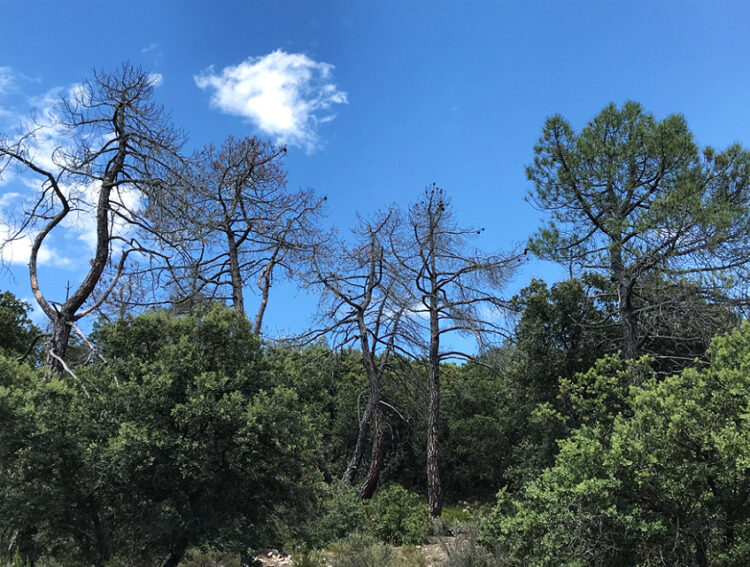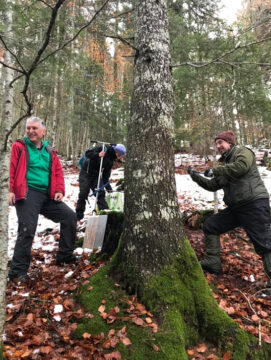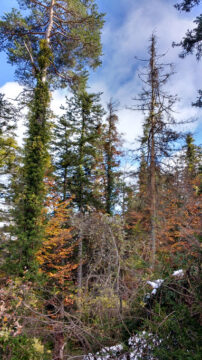
A study led by the researchers from the IPE-CSIC and the UPO, in collaboration with 16 Spanish institutions, has proved that Spain forests have been able to recover its growth promptly while facing the increase of severe droughts during the last 30 years. Most of the 16 tree species analysed in 567 Spain forests recovered growth rates after a severe drought in an average period of two years. The work led by Antonio Gazol, an IPE-CSIC researcher, has been recently published under the title Drought legacies are short, prevail in dry conifer forests and depend on growth variability in the Journal of Ecology.

The study focuses on the ecological memory of the forest ecosystems while facing the cumulative effect of the extreme and recurrent weather events, as in the case of droughts. The researchers have shown how the negative consequences of the droughts can last for years, and how the climate legacy will influence the long-term response dynamics of many of the Iberian Peninsula forests. To this effect, the data on the radial growth of the trees was analysed, based on the dating and width measurement of the trunk’s annual rings through dendrochronology and the data on plant activity or productivity obtained from satellite images taken during the last three decades.
The legacies of the droughts that affected Spain during this period were manifested both in growth reductions and productivity of forests, depending on the dominant species and its ability to adapt. Growth was always more sensitive to lack of water than primary production. However, the results show that climatic legacies are generally short in many tree species, showing an ability to recover high growth rates between one and two years after severe drought.

The species analyzed were 16 ones, which were 9 conifers -fir, Spanish fir, Aleppo pine, black pine, maritime pine, Austrian pine, stone pine, Scots or wild pine and Spanish juniper – and 7 leafy- beech, chestnut, holm oak, Gall oak, Sessile oak, English oak or European oak and Pyrenean oak-. Out of them, the best species adapted to droughts have been Mediterranean pines such as Aleppo and Maritime pine. These species show noticeable impacts and therefore greater legacies from droughts, but they have a fast recovery capacity due to their greater plasticity and adaptation to water deficit. On the other hand, in species which inhabit more humid and temperate zones of the Iberian Peninsula, for example, oaks or chestnut trees, the cumulative effect of droughts is less, with the exception of beech or holm oaks in humid zones, which are more visibly affected.
According to J. Julio Camarero, an IPE-CSIC researcher, “Spanish forests are vulnerable ecosystems facing the increase in the frequency and duration of droughts, but the results show a high capacity to adapt to the recurrence of droughts, especially in Mediterranean pine species, given that their adaptation strategies allow them to face climatic legacies”.
According to Raúl Sánchez-Salguero, researcher and lecturer at the Pablo de Olavide University, «evaluating and understanding the different adaptation strategies while facing increased extreme phenomena, considering the wide diversity of tree species present in the Iberian Peninsula, is essential for identifying critical forests, i.e. highly vulnerable, and thus being able to establish the appropriate forest management measures that could cushion these effects, especially at the driest limits of distribution or in the case of relict forests.» In this sense, the researchers point out that some Pyrenean fir or pine forests in continental and dry areas, as well as relict Spanish fir forests, could see their future viability compromised by the recurrence of severe droughts, since they are the species that show the greatest legacy of accumulated droughts, which, according to the researchers, concur with the marked episodes of forest decline and mortality observed in recent decades. Therefore, as the researchers point out, «analysing the response of these species to increased severe droughts in a wide range of environments can help us improve the tools for assessing their vulnerability or adaptation to future extreme events and for taking conservation action.»
This group of Spanish scientists assures that this approach would allow to forecast future processes of forest decay, induced by the increase in the frequency, duration and intensity of severe droughts in the Iberian Peninsula. The collaboration between groups and the availability of public funds for research on environmental issues has been fundamental and has allowed the creation and analysis of this unique database at European level, making this work a good example of scientific collaboration at national level.
Reference: Gazol, A, Camarero, J.J., Sánchez-Salguero, R., Serra-Maluquer, X., Vicente-Serrano, S.M., Gutiérrez, E., de Luis, M., Sangüesa-Barreda, G., Novak, K., Rozas, V., Tíscar, P.A., Linares, J.C., Martínez del Castillo, E., Ribas, M., García-González, I., Silla, F., Camisón, A., Génova, M., Olano, J.M., Heres, A-M., Curiel Yuste, J., Longares, L.A., Hevia, A., Tomás-Burguera, M., Galván, J.D. 2020. Drought legacies are short, prevail in dry conifer forests and depend on growth variability. Journal of Ecology https://doi.org/10.1111/1365-2745.13435






































